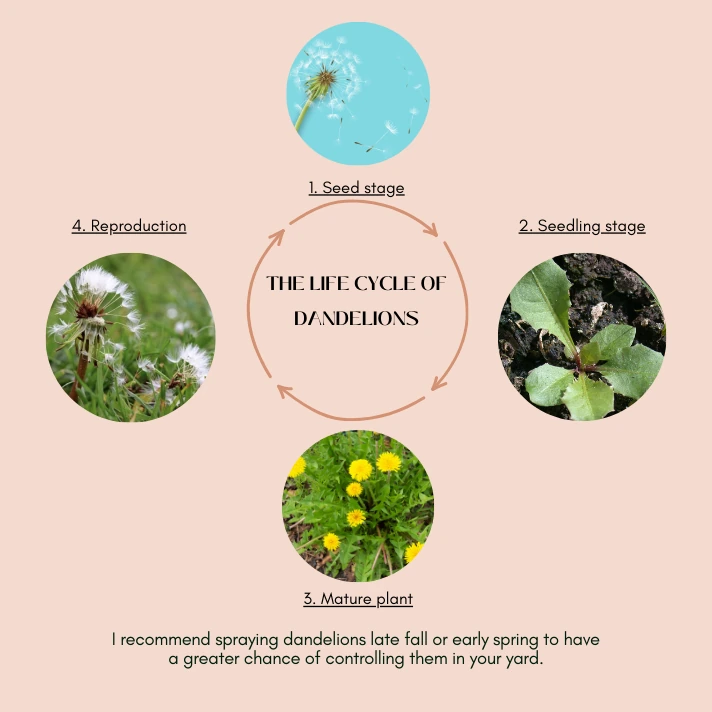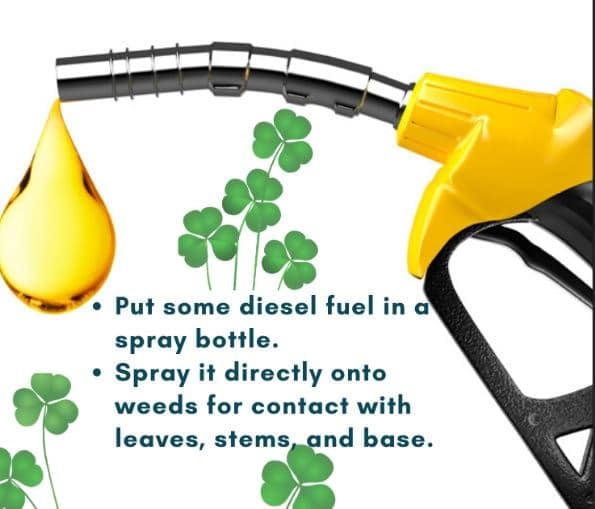How to Get Rid of Weeds in Mulch Beds [+ Stop Them]
Weeds tend to grow just about anywhere there’s enough material to support their root system. That’s including in your mulch beds and flower beds. Some weeds can grow through mulch and become problematic to control. So, how can you get rid of weeds in mulch beds?
The best way to get rid of weeds in mulch beds is to treat the soil with a pre-emergent herbicide first before mulching. This will prevent weeds from growing through the mulch. For existing weeds, cover them with landscaping fabric, uproot or kill them with organic herbicides.
Knowing which plants are weeds goes a long way in dealing with them. Luckily, killing weeds in beds is quite easy since it can be done by simple methods such as hand removal using weed removers such as Fiskars Weed Puller, using herbicides, and others. As for the prevention, you can use a weed barrier cloth or a landscape fabric can do the trick.
Do weeds grow through mulch?

Weeds can grow through mulch no matter the precautions you could have taken when preparing the bed. Weed seeds can be in the soil, birds can bring them to the bed and you could have brought them in with the seeds of the main plants.
Weeds can grow through mulch since their seeds can be in the soil or be brought in the bed by birds. Given their toughness, they will force their way through most mulching materials such as pine needles or even bark chips. They could even start growing way before the main plants in the bed.
How to kill weeds in mulch beds
Killing weeds in a mulch beds is slightly different from doing the same in a larger area such as a garden for example. It’s both easier and harder at the same time given the smaller size and delicate nature of the bed respectively.
It can be done in the following ways:
1. Remove weeds manually
With this approach, there are two ways to do it:
Adding mulch
Mulch works against weeds by blocking sunlight from reaching the surface of the soil. This doesn’t always work as sunlight can find its way through the layer of mulch leading to the growth of weeds. Given that weeds can grow in tougher conditions compared to normal plants, a little sunlight is all they need to sprout.
The solution to this is to increase the amount of mulch on the bed. With mulch, the more you add on the bed the better since it provides better cover from the sun. You should do this each time the mulch rots or is blown away by the wind.
Be careful with mulch since too much of it can actually be harmful to your plants. Don’t add so much of it that it prevents the primary plants from sprouting or inhibits the circulation of air. Add just enough to keep the sun out and the surface moist enough for germination.
Hand removal of weeds
You can also just use your hands to uproot the weeds you see jutting out of the mulch. You have the option of waiting for them to appear above the mulch or removing the mulch, uprooting them then applying the mulch on the bed again.
Either method works well given the relatively small size of beds.
You can remove softer weeds using your hands wearing gloves but for tougher weeds such as grown nutsedge, crabgrass, and shrubs, you might want to use a tool such as a stand-up weed puller.
[amazon box=”B0030MIHAU”]
2. Use herbicides
The use of herbicides is one of the most efficient since it works better than hand removal and for longer. There are several ways you can do this.
Using pre-emergent herbicides
Pre-emergent herbicides work by killing weeds in a parcel of land before the primary plants sprout (emerge from the soil). It also kills weeds before they appear. You can’t thus use it directly on weeds that have already sprouted since they won’t die. It’s used to prevent the growth of weeds rather than kill them.
To use this type of herbicide on weeds that have already germinated, you should first remove the mulch from the bed, uproot the sprouted weeds then apply the herbicides. After that, you apply mulch to the bed again making sure not to disturb the soil too much. Apply another spray of herbicides on the mulch for the best results.
Using post-emergent herbicides
Post-emergent herbicides work by killing weeds after they’ve sprouted and are visible to you. They also work even when the primary plants have sprouted alongside the weeds. This group of herbicides are best applied by removing the mulch then spraying them on the bed wholesomely. Be sure that it doesn’t kill the primary plants before application.
Note: While glyphosate can be used to kill weeds in mulch, you should be careful when applying it since it’s a broad-spectrum weed killer that will kill all broad-leaved plants. You should thus apply it on each individual weeds with a paintbrush making sure it doesn’t touch other plants. You may also use cardboards to protect the rest of the plants when applying it. Remove the cardboards only when the weeds are dry.
3. Cut off their heads
In the cases where you can’t oil out the weeds or spray them with a herbicide or even use weed killers such as baking soda, you have the option of simply cutting off their heads. By this, it means as much of the top part as you can. This helps kill the weeds and stop their spread since you’ll be cutting off the leaves which supply the rest of the plant with nutrients. You’ll also be cutting off the ability of the plant to produce seeds and spread them out.
With time, the plant exhausts its nutrients and dies off. Use pruning loppers, string trimmers or other sharp objects for this task.
These are effective yet easy ways to eliminate weeds from your bed. Always check whether any products you’re using on your bed, garden or farm has any adverse effects on the plant or the user. This is most important with the use of chemicals some of which are heavy pollutants.
How do I keep weeds from growing in my mulch?
The best methods to prevent weed growth in your mulch include the following:
1. Use Pre-emergent herbicides
As detailed above, pre-emergent herbicides kill weeds before they sprout. They work best when you apply them on the soil with a spray can then apply the mulch. If the weeds have already sprouted, you can apply this type of herbicides by first uprooting the weeds.
2. Use a weed barrier cloth or landscape fabric
These are pieces of cloth that you simply put on the bed once you’ve seeded it. While preventing the growth of weeds, they’re porous enough to allow for the seeping if water to the soil below.
The downside to using weed barriers is that there are weeds that are notorious enough to grow through them. If this occurs, it’s usually a headache getting them out as they’d be intertwined with the cloth’s fabric.
3. Cultivate only when necessary
Unknown to many people, every square inch of soil has weed seeds ready to germinate. When they receive light and water, they’ll quickly germinate. This means that the weed seeds on the top layer are the ones with the chance to germinate. When you cultivate the soil, you bring the seeds underground to the top layer of soil where they can easily germinate. As such, only cultivate when it’s necessary.
4. Solarize the soil
Basically, solarizing the soil refers to the act of heating the soil up to kill the weeds in their seed form. It takes a bit of time but it’s one of the most effective methods.
It’s done as follows:
- After cultivating the soil ready to plant, rake the surface to make it fine.
- Water it with large amounts of water.
- Cover the soil with a heavy piece of plastic sheet or tarp. Secure the plastic sheet in place by placing rocks or other heavy objects around its edges.
- Occasionally water the area at the edge of the plastic to keep it moist at all times.
This setup creates a lot of heat when the bed is hit by the sun’s rays. The heat created is usually enough to kill the weeds in their seed form.
With each preventive measure outlined here, you get closer to a weedless garden. However, weeds will always come up and your focus should be keeping them under control.




